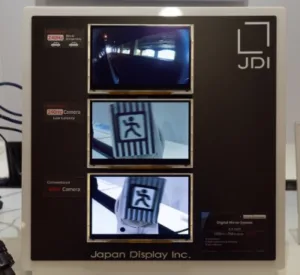For many years, one of the consistent highlights of SID has been to visit Toshiba’s panel business, which then became TM Displays and, eventually, JDI. As usual, there was lots and lots to see and we simply didn’t have time to get into depth, which is a shame.
We started by looking at JDI’s PixelEyes technology which uses in-cell touch, which is now in its 2nd generation. New materials mean better black levels and higher resolution support as well as thinner borders and better linearity. It is available in a range of five sizes from 4.7″ to 5.7″, with alternative resolutions in 5.0″ and 5.5″. The technology, of course, reduces the thickness of the module, which is appreciated by mobile device makers. JDI told us that it is able to get a good signal to noise ratio with the technology, so it is able to detect hover and proximity as well as touch, even on wet surfaces. Elsewhere, we saw the PixelEyes technology being used to supply force touch data.
There was a demonstration of the PixelEyes technology being used in a 10.2″ display that would be suitable for use in an automotive centre console and a 16″ that could be used in a notebook. The 10.2″ is currently sampling and JDI highlighted the improved optical performance from the in-cell approach – a critical factor in automotive applications. The company also had a version of the 10.2″ with RGBW pixel configuration and a ten zone local dimming backlight (with 40 LEDs). That is needed to get the deep blacks that auto designers want and to compete with OLED’s high contrast. The RGBW pixel means 9.0% transmissivity compared to 7.6% on similar RGB panels. The panel uses an LTPS backplane.
We then moved to look at automotive mirror displays. JDI has products that can meet the North American regulation requiring fall back to an optical mirror mode. Low latency is critical in this application and JDI drives its 6.5″ WXGA panel at 240Hz. By including processing in the display, and dispensing with frame buffers, JDI claims to reduce the latency from camera to display from a typical value of 50ms to 0.2ms while also improving response times (Tr + Tf) from 20ms to 8ms. It also has an extended temperature range and uses an additional white sub-pixel (which JDI calls WhiteMagic). JDI is extending the conditions for its automotive displays to ‘Rugged+’ which means conformance with TS16949 and temperatures from -30ºC to +85ºC operation and -40ºC to +90ºC for storage.
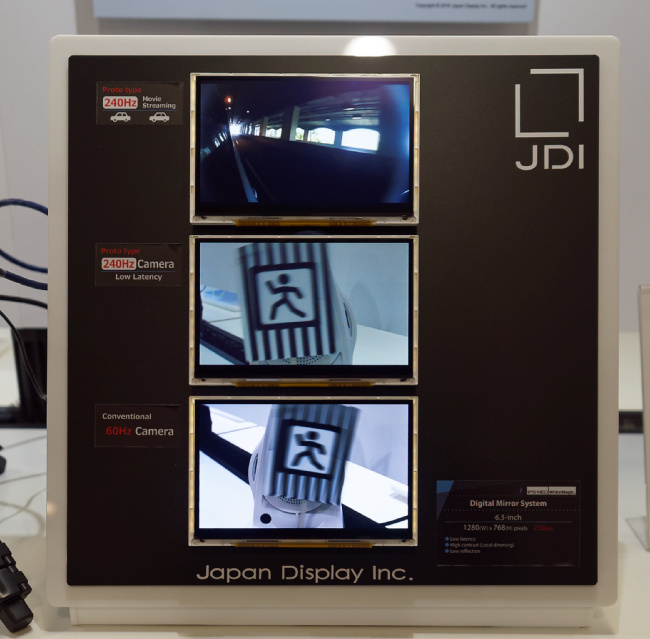 JDI had a very impressive mirror display demonstration that was showing the much better speed of its specific display. Image:Meko
JDI had a very impressive mirror display demonstration that was showing the much better speed of its specific display. Image:Meko
JDI has a very wide range of QHD (2560 x 1440) displays and these are increasingly being used at the higher end of the mobile device market.
Reflective displays are not a class of technology that we would associate with JDI, especially not in (relatively) large sizes. However, at the event, the company was showing a 25.2″ reflective colour LCD for “digital signage” and a 32″. The panels use ‘memory-in-pixel’ (MIP) technology and an RGBW pixel structure to boost reflectivity. Borders are just 1.3mm.
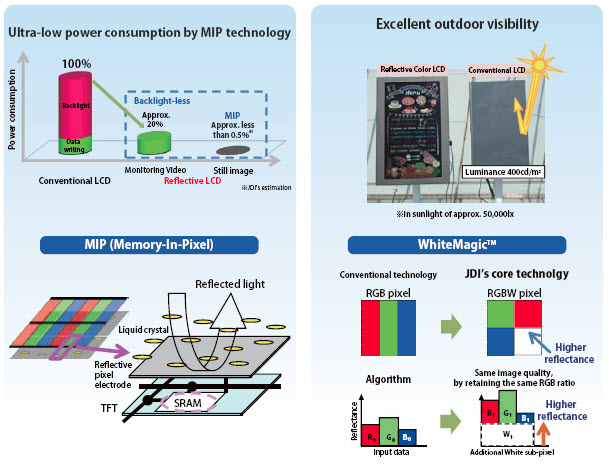
JDI told us that it expects a lot of different applications for the core technology, where power is an issue, including being able to react to success by E Ink-based displays in electronic shelf labels. JDI will have smaller products in 4.4″ (VGA), 2.7″ (400 x 240), 1.34″ (320 x 300) and 1.28″. The 1.28″ device, which has 176 x 176 resolution (194ppi) uses <1µa which means that the display should be able to run for “several years” on a single battery. The displays also use a Serial Peripheral Interface (SPI) which makes interfacing simple for IoT applications. We noted that the small displays for wearables had good saturation for reflective displays, and they are quoted as having 21% typical reflectance and 20:1 contrast – again, good for reflective technology. The displays can support 6 bit colour and can support video operation at around 20mW.
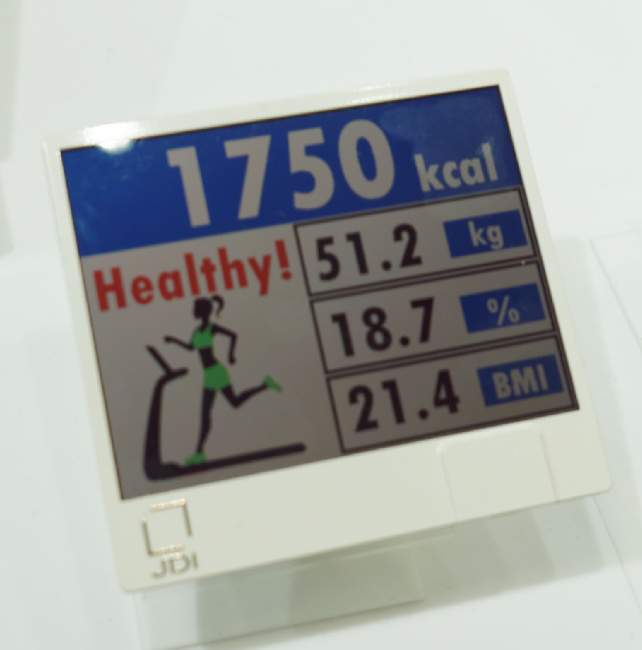 JDI showed this impressive ESL Display. Image:Meko
JDI showed this impressive ESL Display. Image:Meko
Although JDI is really an LCD house at the moment, it is developing OLEDs. On show was a 5.2″ flexible FullHD (423ppi) with 300 cd/m², more than 30,000:1 contrast and 108% of sRGB colour. The device can be bent to a radius of 53mm and the basic device (without cover glass or touch) is just 0.05mm thick.
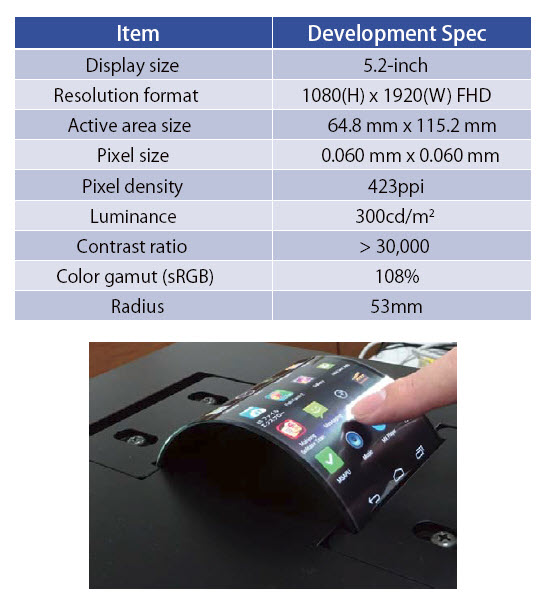 JDI is reacting to the demand for OLED. Image:JDI
JDI is reacting to the demand for OLED. Image:JDI
Of course, high resolution has been a core technology for JDI, based on its LTPS backplane technology, and it was showing a very impressive 17.3″ 8K panel (510 ppi) that was running at 120Hz. Brightness of 500 cd/m² and 2,000:1 contrast complete an impressive set of specifications – and enough to win an SID Display Award. The panel was very impressive, although still a prototype – realistically it would be hard to drive with current PC technology.
Also at the high end, there was an 8″ UltraHD panel that uses RGBW to reduce power and with a low frequency drive mode to further reduce power. Each step is expected to reduce consumption by 30% for a combined reduction of just over 50%. There was also a 5.46″ UltraHD panel (806 ppi) for very high end mobile applications.

